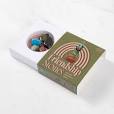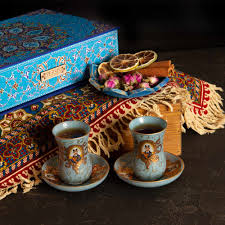Discover Unique Anime Gifts to Delight Your Inner Fan
Unique Anime Gifts to Delight Every Fan
For anime enthusiasts, finding the perfect gift that reflects their love for this vibrant art form can be a joyous experience. Whether you’re shopping for a friend, family member, or treating yourself, there are plenty of unique anime gifts that are sure to delight every fan.
Anime Merchandise
From t-shirts and hoodies featuring iconic characters to collectible figurines and posters, anime merchandise is a popular choice for fans of all ages. Consider gifting a limited edition item or a set of merchandise from their favourite anime series.
Manga Sets
For those who enjoy reading as much as watching anime, a set of manga volumes makes an excellent gift. Choose from classic series or new releases to expand their collection and immerse them in captivating storylines.
Cosplay Accessories
Cosplay is a beloved tradition among anime fans, allowing them to dress up as their favourite characters. Surprise them with high-quality cosplay accessories such as wigs, props, and accessories to enhance their next cosplay experience.
Anime Art Supplies
If your giftee is artistically inclined, consider gifting them a set of anime-inspired art supplies. From sketchbooks and markers to watercolour sets and digital drawing tablets, these gifts will inspire creativity and bring their favourite characters to life.
Subscription Services
Give the gift of endless entertainment with a subscription to an anime streaming service or manga platform. This way, the recipient can access a wide range of anime series, movies, and manga titles at their fingertips.
Whether you’re shopping for a special occasion or simply want to show your appreciation for an anime fan in your life, these unique gifts are sure to bring joy and excitement. Embrace the world of anime with thoughtful presents that celebrate this beloved art form!
Discover the Charm: 7 Reasons Why Anime Gifts Delight Fans and Collectors Alike
- Anime gifts cater to a wide range of interests and preferences, making it easy to find something for every fan.
- They offer a unique and creative way to express one’s love for a specific anime series or character.
- Anime gifts can evoke nostalgia and fond memories associated with beloved shows, creating sentimental value.
- They are often collectible items that hold intrinsic value and can appreciate over time.
- Anime gifts allow fans to showcase their passion for the art form through merchandise, clothing, or accessories.
- They make thoughtful and personalised presents that demonstrate an understanding of the recipient’s interests.
- With the vast variety of anime-related products available, there is always something new and exciting to discover in the world of anime gifts.
Challenges in Choosing the Perfect Anime Gift: Availability, Quality, Cost, Sizing, and Preferences
- Limited availability of official merchandise for niche or less popular anime series.
- Quality of some anime merchandise may vary, leading to potential disappointment.
- Cost of collectible items such as figurines and limited edition sets can be high.
- Sizing issues with clothing items like t-shirts and hoodies, especially for international purchases.
- Difficulty in choosing the right gift without knowing the recipient’s specific preferences within the vast world of anime.
Anime gifts cater to a wide range of interests and preferences, making it easy to find something for every fan.
Anime gifts offer a versatile and diverse range of options that cater to a wide spectrum of interests and preferences within the anime community. Whether someone is a fan of classic series, new releases, specific genres, or beloved characters, there is always something unique and special to suit their tastes. This diversity makes it effortless to find the perfect anime gift for every fan, ensuring that they receive a present that resonates with their individual passion for this vibrant art form.
They offer a unique and creative way to express one’s love for a specific anime series or character.
Anime gifts provide a distinctive and imaginative avenue for individuals to showcase their affection for a particular anime series or character. By offering a wide range of merchandise, from clothing to collectibles, these gifts allow fans to express their passion in a tangible and personal manner. Whether it’s through wearing a t-shirt featuring their favourite character or displaying a figurine on their shelf, anime gifts enable fans to celebrate and immerse themselves in the world of anime in a creative and heartfelt way.
Anime gifts can evoke nostalgia and fond memories associated with beloved shows, creating sentimental value.
Anime gifts have a unique ability to evoke nostalgia and bring back fond memories associated with beloved shows, creating a deep sense of sentimental value. Whether it’s a figurine of a favourite character or a poster from a cherished series, these gifts serve as tangible reminders of the joy and excitement experienced while watching anime. They have the power to transport fans back to moments of happiness and connection, making them truly special keepsakes that hold a place in the heart of every anime enthusiast.
They are often collectible items that hold intrinsic value and can appreciate over time.
Anime gifts have a unique pro in that they are often collectible items that hold intrinsic value and can appreciate over time. From limited edition figurines to rare manga sets, these gifts not only bring joy to fans but also serve as valuable investments. As the popularity of certain anime series grows and certain merchandise becomes harder to find, the value of these collectibles can increase, making them cherished possessions for years to come.
Anime gifts allow fans to showcase their passion for the art form through merchandise, clothing, or accessories.
Anime gifts offer fans a wonderful opportunity to express their deep passion for the art form in various ways. Whether it’s through collecting merchandise featuring beloved characters, wearing anime-themed clothing with pride, or accessorising with items that reflect their favourite series, these gifts allow fans to showcase their love for anime in a tangible and meaningful manner. By incorporating elements of their favourite shows into their everyday lives, anime enthusiasts can immerse themselves even further in the captivating world of anime and connect with like-minded individuals who share their enthusiasm.
They make thoughtful and personalised presents that demonstrate an understanding of the recipient’s interests.
Anime gifts have a unique charm in the way they make thoughtful and personalised presents. By choosing an anime-themed gift for someone, you demonstrate a deep understanding of their interests and passions. Whether it’s a character they adore, a series they can’t get enough of, or a specific art style that resonates with them, anime gifts show that you’ve taken the time to select something truly meaningful to the recipient. This personal touch adds an extra layer of thoughtfulness to the gift-giving experience, making anime gifts a wonderful way to celebrate and connect with the anime fan in your life.
With the vast variety of anime-related products available, there is always something new and exciting to discover in the world of anime gifts.
With the vast variety of anime-related products available, there is always something new and exciting to discover in the world of anime gifts. From collectible figurines to stylish apparel and intricate cosplay accessories, anime enthusiasts are constantly delighted by the diverse range of options that cater to their passion. Whether exploring classic series or discovering the latest trends in anime merchandise, fans can always look forward to finding unique and captivating items that reflect their love for this vibrant art form. The ever-evolving landscape of anime gifts ensures that there is never a shortage of surprises waiting to be uncovered, making each shopping experience a thrilling adventure for fans of all ages.
Limited availability of official merchandise for niche or less popular anime series.
One drawback of anime gifts is the limited availability of official merchandise for niche or less popular anime series. While mainstream shows often have a wide range of merchandise options, fans of lesser-known or niche anime may struggle to find official products that reflect their favourite series. This can be disappointing for dedicated fans who wish to showcase their love for these unique shows through collectibles and accessories. As a result, the lack of merchandise availability for less popular anime series can make it challenging for fans to fully immerse themselves in the world of their beloved shows.
Quality of some anime merchandise may vary, leading to potential disappointment.
When it comes to anime gifts, one potential drawback is the varying quality of merchandise available in the market. Some anime products may not meet the expectations of fans in terms of durability, design accuracy, or overall craftsmanship. This inconsistency in quality can lead to potential disappointment among recipients who have high standards for their collectibles. It is essential for gift-givers to research and choose reputable sources when purchasing anime merchandise to ensure that the gift will be well-received and cherished by the recipient.
Cost of collectible items such as figurines and limited edition sets can be high.
One significant drawback of anime gifts is the high cost associated with collectible items like figurines and limited edition sets. For avid fans looking to expand their collections or acquire exclusive merchandise, the price tag can often be a barrier. The premium pricing of these items may limit accessibility for some enthusiasts, making it challenging to indulge in their passion for anime through these coveted and sought-after pieces. Despite the allure of these collectibles, the steep costs involved can pose a conundrum for fans seeking to enhance their anime experience through valuable and unique items.
Sizing issues with clothing items like t-shirts and hoodies, especially for international purchases.
One common downside of anime gifts, particularly clothing items like t-shirts and hoodies, is the issue of sizing discrepancies, especially when it comes to international purchases. Fans may face challenges in finding the right fit due to variations in sizing standards across different regions. This can lead to disappointment when the item received does not match the expected size or fit. It’s essential for buyers to carefully review size charts and consider ordering a size up to accommodate potential differences in measurements, ensuring a better chance of receiving a garment that fits comfortably and as intended.
Difficulty in choosing the right gift without knowing the recipient’s specific preferences within the vast world of anime.
One notable con of anime gifts is the challenge of selecting the perfect present without a clear understanding of the recipient’s specific preferences within the expansive realm of anime. With countless genres, series, and characters to choose from, it can be daunting to pinpoint a gift that resonates with the recipient’s unique tastes. The diverse nature of anime makes it difficult to anticipate what will truly delight the individual, potentially leading to uncertainty and hesitation when selecting a gift. In such cases, the risk of choosing an item that may not align with their preferences poses a significant obstacle in the gift-giving process.






